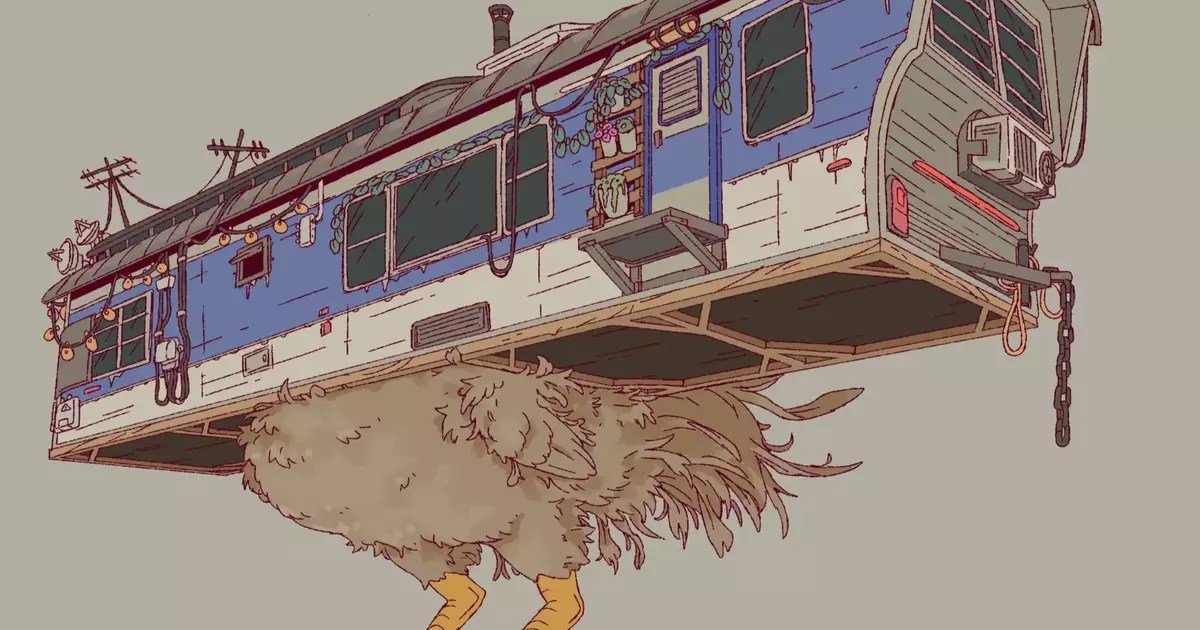What happens when storytelling meets the perplexities of nature? Giant Sparrow, the creative force behind the acclaimed “What Remains of Edith Finch,” is once again treading uncharted waters. Their upcoming project—tentatively titled “Heron”—promises to unveil a unique narrative experience that dances between whimsical surrealism and the darker facets of human existence. As this new venture emerges, its ambitious fusion of exploration and emotion is set to reshape how players relate to both gameplay and the organic world around them.
At the core of Giant Sparrow’s narrative philosophy lies an enduring fascination with the fragility of life. Their prior success—centered on a cursed family’s poignant stories—is a testament to how interactive storytelling can illuminate the melancholy of human existence. Each vignette in “What Remains of Edith Finch” acted as a crystal ball, revealing the splintered lives of its characters while offering players a firsthand experience of their tragedies. This emotional depth and psychological complexity resonated with audiences, elevating the tales told within the game to memorable lore.
Now, as Giant Sparrow prepares to embark on a new epistolary journey through “Heron,” the promise of exploring the strangeness of life is accompanied by unprecedented creative liberties. Unlike traditional nature documentaries, often seen as monotonous sequences of disconnected images, the new project aims to evoke a sense of immersion and interactivity, challenging players to engage directly with the quirks of organic life.
At the heart of “Heron” is an amusing twist on the storytelling format, blending elements from various inspirations—be it the whimsical aesthetics of Studio Ghibli films or the charming yet haunting narratives in games like Ico. Ian Dallas, the founder of Giant Sparrow, has shared insights into the team’s vision, revealing a desire to subvert expectations commonly held about nature documentaries. Contrary to the often shallow and disjointed presentations typical of the genre, Giant Sparrow aims to forge a narrative tapestry that celebrates bizarre ecology while allowing players to dissect these life forms on a personal level.
Indeed, Dallas’s critique of conventional nature documentaries highlights a shared frustration among creatives: the continual surface-level exploration of complex subjects. The incorporation of more fantastical elements—like chicken-legged houses—emphasizes creativity over conventions, encouraging a playful curiosity about biology. The ultimate goal appears to be a more profound engagement with nature’s oddities, inviting players to navigate a world where whimsy intermingles with the grotesque, effectively challenging preconceptions about both nature and narrative.
In a world where single-player games often resemble meticulously crafted chessboards, Giant Sparrow is looking to carve out a different path. Dallas envisions a realm steeped in exploration, wherein players encounter a variety of strange life forms, each brimming with character and intrigue. As players interact with these creatures, they may find themselves in scenarios that provoke not only curiosity but also a visceral reaction—much akin to the discomfort felt when faced with the intricacies of biological life.
Consideration of both interactivity and surprise is woven into the fabric of gameplay; the challenge lies in coaxing animals into cooperation. For instance, trying to entice a giraffe into compliance adds a layer of unpredictability, differentiating the experience from the structured decisions players often make in more conventional titles. It’s a thrill-centric approach that prioritizes exploration over linear questing, showcasing the unusual and often unsettling elements inherent in the biological realm.
The question remains: how will Giant Sparrow confront the delicate interplay of player choices and the autonomy of non-human creatures in this world? It invites speculation on whether the in-game animals will be portrayed passively, subject to the whims of player exploration, or if they’ll exhibit more agency within the narrative. The potential interrogation of biology as a knowledge-making discipline could add further depth to the gaming experience, stimulating discussion around the themes of ecological interdependence.
Conceptually, “Heron” evokes echoes of the New Weird literary genre, incorporating elements of the disturbing and the absurd, with an emphasis on how players engage with the larger-than-life biodiversity that populates the game. If layering these whimsical and unsettling facets is done effectively, the transformative power of play may lead to newfound insights into our world’s mysterious natural tableau.
As Giant Sparrow prepares to step forward with “Heron,” their ambition to entwine emotional engagement with explorative gameplay could alter conventional narratives in gaming. With an approach that eschews predictability, the project is poised to resonate with players seeking both a whimsical escape and a profound reflection on the oddities of existence. Curious minds will undoubtedly find themselves drawn to this evolving world—a place where the line between reality and imaginative whimsy blurs, encouraging a fresh exploration of life in its most unexpected forms.


Leave a Reply